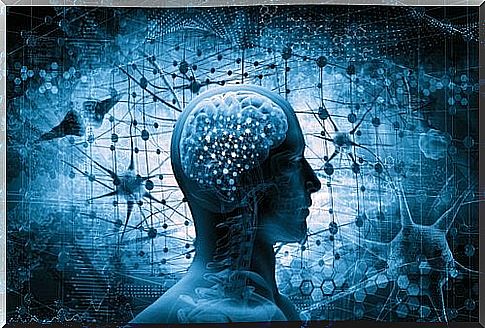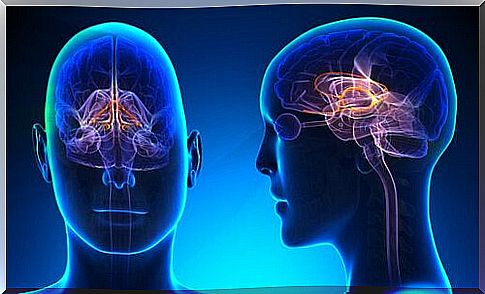How The Brain Works In Critical Situations

The brain, in critical situations, does not act as it does on a daily basis. It sets up a super-rapid neural response system that activates a series of behavioral and hormonal responses. The goal is to survive. This way of acting is innate and different from the one we consciously use on a daily basis.
Our brain makes sure that everything we do goes well: it is the organ that has the most responsibility in the dynamics of our bodily functions and our behaviors. Very often it works in a conscious and procedural way (by activating functions already learned, such as walking and speaking).
However, this way of working is not the only way for the brain. When critical situations arise, situations in which it detects a risk or threat to life, the brain works with other neural networks responsible for activating the survival system. When it identifies imminent danger, the brain prepares to make immediate decisions.
Thus, this neural network system works as an alarm system. It is he who is responsible for making decisions in critical situations. This alarm system is not perfect and it can sometimes lead us to make bad decisions or, at least, poorly thought out decisions. Let us now see how the brain works in critical situations and what are the consequences of activating the alarm and survival system.
The cerebral limbic system: the system that sends the alarm signal
The human brain has a neural system that deals with emotional processing and responses related to fear and anxiety; we are talking about the limbic system, located in the temporal lobe. We find there a structure specifically dedicated to the detection and treatment of danger: the cerebral amygdala. The amygdala is connected to different areas of the brain and has the capacity to engage in fast and intense behaviors.
Almost all mammalian species have an innate flight-fight-paralysis response to dangerous stimuli. This reaction comes from the amygdala. The alarm reaction can be consciously “turned on” when we realize we are in danger, just as it can be done unconsciously through a brain “shortcut”. In other words, before we even realize it, it is possible that the life support system has turned on and the amygdala has put in place different responses.

Possible responses of the brain in critical situations
The escape
First, the brain, in critical situations, can give the order to flee. This order will not be reflected. He will not ask us if fleeing or staying are adequate solutions. The response, in times of danger, can therefore make the situation worse because we make decisions without measuring the consequences. These decisions are a bit like reflexes.
The function of flight is simply to move us away from danger to seek refuge and help. In a critical situation, it can cause us to escape from a place without detecting the dangers we face by choosing this option. This can be the case, for example, if we cross a street quickly without looking to see if cars are coming or if we have to jump from a balcony.
The struggle
Another possible answer is the struggle or fight (in English fight ). It is the response through which the individual does anything to save his life or eliminate the threatening stimulus. When the sympathetic system activates this wrestling response, adrenaline levels rise dramatically in the blood. An acute stress response then develops: the muscles become more resistant, the skin more sensitive and the lungs see their capacities expand. All of this translates into greater strength and endurance.
Paralysis
Third, another option may be paralysis or bewilderment. We lose our ability to react, we hide and are unable to do anything. Paralysis as a response seeks the threat to disappear without detecting our presence. If this response takes place, it is important to know that the person is unable to activate their motor system (muscle movement) and therefore has to remain still.
Thus, in critical situations, the brain has a survival system that activates very quickly and unconsciously, in a few fractions of a second. This can lead to an inappropriate response. In fact, very often the alarm response increases the danger: this is why there are professionals who are responsible for training people so that they know how to act in an urgent situation.
Consequences of activating the alarm and survival system
The definite and immediate consequence of a critical situation, once it has ended, is physical and emotional exhaustion. This extreme fatigue results from the wear and tear caused by this dangerous situation. It can last more than a day and sometimes remain present even after resting. Why? Because all the neurons and all our physical resources wanted to survive and overcome the situation. They must therefore recover the energy they have lost.

Another possible consequence, in addition to exhaustion, is the mark left by this critical situation in our memory. This happens because the amygdala and the hippocampus (the structure responsible for fixing new learning and creating memories) work together. The amygdala activates the hippocampus so intensely that it forces the memory to register deeply. It is for this reason that critical situations are ingrained in our memory throughout our lives, with a fair amount of detail.
Post-traumatic stress
Activating the brain in critical situations can also lead to post-traumatic stress disorder (PTSD). This problem develops when the level of physical activation is extremely high and when the main emotion is intense fear. Be aware, however, that not all critical situations lead to PTSD.
Moreover, this syndrome requires specialized psychological therapy because it is characterized by a series of flashbacks, moments of deep sadness and the perception of a constant threat in the nearest environment.
Finally, it is important to remember that the brain can learn to respond more adaptively to critical or dangerous situations. Training, emergency protocols and personal defense strategies are key elements that can help us improve our survival response.










